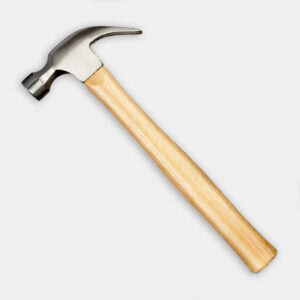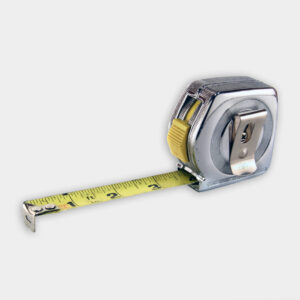How To Install an Alternative to Gutters
We may be compensated if you purchase through links on our website. Our team is committed to delivering honest, objective, and independent reviews on home products and services.
More
Project details
Skill
1 out of 5Easy
Cost
Estimated Time
Gutters are needed for most homes, but if you’re looking for a low-maintenance way to deal with rainwater and you can’t make downspouts work for your home, there are gutter alternatives available. This Old House expert Tom Silva demonstrates how to install a rain dispersal system, offering homeowners a unique solution to manage rainwater without traditional gutters.
Understanding Gutter Alternatives
Gutter alternatives—such as rain dispersal systems—offer a different approach to managing water runoff from your roof. These systems are designed to break up water flow and disperse it away from your home’s foundation, preventing potential damage. While they might not replace traditional gutters in every scenario, they can provide significant benefits.
What Is a Rain Dispersal System?
A rain dispersal system, sometimes called a “gutterless gutter,” is a series of angled louvers that attach to your home’s fascia board. As water runs off the roof, it hits these louvers, which then break the water into smaller droplets and push them away from the building. This dispersal method reduces water’s impact on your home’s siding and foundation over time. Distributing the water more evenly like this helps prevent erosion and maintains your property’s structural integrity.
Benefits of Gutter Alternatives
Rain dispersal systems offer several advantages over traditional gutters, including the following:
- Aesthetically pleasing: Rain dispersal systems provide a sleek, unobtrusive look.
- Ice-free: They reduce the likeliness of ice dam formation in winter.
- No downspouts: They eliminate the need for unsightly downspouts.
When To Consider a Gutter Alternative
While traditional gutters are often the most effective solution, alternatives like rain dispersal systems make more sense in scenarios like the following:
- Areas with good natural drainage around the foundation
- Homes with no good location for downspouts
- Homeowners looking for a low-maintenance option
- Houses where traditional gutters frequently clog with debris
Installing a Rain Dispersal System
Installing a rain dispersal system is a straightforward process that most DIY-savvy homeowners can tackle. Below, we’ll share a step-by-step guide to help you through the installation, which you should be able to complete over a weekend with some basic tools and a rain dispersal system kit.
Preparing for Installation
Before you begin, gather the following tools and materials:
- Caulk and caulk gun
- Drill/driver
- Flat pry bar
- Hammer
- Ladder
- Rain dispersal system kit (including louvers, brackets, and screws)
- Safety equipment (gloves, goggles)
- Tape measure
Removing the Old Gutters
If you’re replacing existing gutters, you’ll need to remove them first. Follow these steps and proceed carefully to avoid damaging your home’s fascia board:
- Use a pry bar to remove the gutter spikes or screws.
- Carefully detach the gutter from the fascia board.
- Remove any remaining hardware or nails.
- Clean the fascia board to remove any dirt or debris buildup.
Installing the Mounting Brackets
Proper bracket placement enables the system to function correctly. Incorrectly placed brackets can lead to inefficient water dispersal and potential water damage to your home, so follow these steps:
- Mark the fascia board at 10 inches, 30 inches, 50 inches, and so on at 20-inch increments from the end of the house.
- Screw the mounting brackets into place at these marks, ensuring they’re at least 4 inches down from the roof edge and 1.5 inches from the drip edge.
- Continue this pattern along the entire length of the fascia board.
- Double-check all measurements to ensure consistency and proper spacing.
Attaching the Louvers
Once the brackets are in place, you can attach the louvers. The rain dispersal system’s efficiency largely depends on the correct angling and secure attachment of the louvers, as follows:
- Clip the louvers into the installed brackets.
- Ensure each louver is securely fastened.
- Check that the louvers are angled correctly to disperse water away from the house.
- Test the louvers by pouring a small amount of water onto the roof and observe the dispersal pattern.
Maximizing the Effectiveness of Your Gutter Alternative
You can take a few additional steps to ensure your rain dispersal system works as intended and to extend its lifespan.
Adjusting the Drip Edge
In the video, Silva emphasizes the drip edge’s role in preventing water damage. You can adjust the drip edge as follows so it directs water away from the fascia board, reducing the risk of rot:
- Bend the lower edge of the drip edge out slightly to create a gap. This gap allows water to fall straight down instead of adhering to the fascia board.
- Ensure the drip edge runs the entire length of your roof to guide water effectively.
Sealing and Protecting
To further protect your home from water damage, especially areas that may have minor gaps or vulnerabilities, take the following preventive measures:
- Fill any gaps between the fascia board and the house with caulk.
- Seal any holes left from removing old gutter hardware.
- Consider painting or sealing exposed wood to prevent rot.
- Inspect the sealed areas periodically to ensure they remain intact.
Additional Drainage Solutions
While a rain dispersal system can effectively manage water from your roof, you may need to take the following measures to protect your foundation:
- Consider installing catch basins or dry wells to further manage water runoff.
- Create a gravel or stone drip path beneath the eaves.
- Ensure proper grading around your foundation to direct water away from the house.
- Install a French drain around the perimeter of your home.
Maintaining Your Gutter Alternative
One of the main advantages of a rain dispersal system is minimal maintenance. However, regular inspection and routine upkeep can prolong the system’s efficiency and lifespan. Here are some maintenance tasks you can perform:
- Check that the brackets remain securely fastened to the fascia board.
- Clear any large debris that may accumulate on top of the louvers.
- Inspect the system annually for any loose or damaged louvers.
- Monitor the system’s performance during heavy rains to spot any issues early.
- Periodically clean the louvers with a garden hose to remove any dirt or grime buildup.
Deciding Between Traditional Gutters and Alternatives
Choosing between traditional gutters and alternatives like rain dispersal systems depends on several factors, including your home’s location and local climate. Consider the following:
Aesthetic Values
- Rain dispersal systems provide a sleek, modern appearance.
- You can customize traditional gutters to match your home’s architectural style.
Climate and Rainfall
- Homes in areas with moderate rainfall might benefit more from rain dispersal systems.
- In regions with heavy rainfall or frequent storms, gutters made of durable material like copper may offer better protection.
Maintenance Preferences
- Homeowners seeking low-maintenance solutions may prefer rain dispersal systems.
- Those willing to perform regular upkeep may find traditional gutters more suitable.
Our Conclusion
Rain dispersal systems offer a viable alternative to traditional gutters, especially in situations where downspouts are impractical. While they may not be suitable for every home, these systems can provide effective water management with minimal maintenance. As with any home improvement project, consider your specific needs and consult a professional if you’re unsure about the best solution for your home. Installing a rain dispersal system could be the key to maintaining a dry, beautiful home environment.
Tools
 Ladder
Ladder Hammer
Hammer Flat pry bar
Flat pry bar Drill/driver
Drill/driver Tape measure
Tape measure
Source: https://www.thisoldhouse.com/gutters/21016180/how-to-install-an-alternative-to-gutters
 drainwaters.com
drainwaters.com





